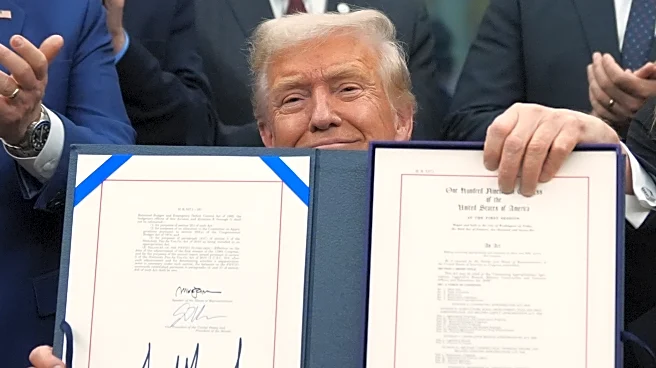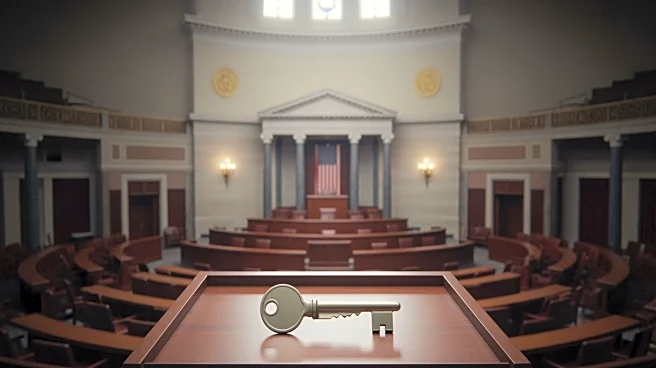What's Happening?
The U.S. government shutdown, which lasted for 43 days, has come to an end after President Trump signed a funding bill. The House of Representatives voted 222 to 209 to reopen the federal government, marking
a victory for Trump and the Republicans. The shutdown had significant impacts, including flight cancellations and delays in food assistance payments from the Supplemental Nutrition Assistance Program (SNAP), while federal workers went unpaid. The resolution came after six Democrats joined Republicans to pass the funding bill, despite not extending health care subsidies as demanded by Democrats.
Why It's Important?
The end of the shutdown is crucial as it restores normal operations for federal agencies and alleviates the financial strain on millions of Americans affected by the halt in government services. The shutdown had sparked debates over party responsibility, with polls indicating more voters blamed the GOP than Democrats. The resolution may influence public perception and political dynamics, especially as President Trump's approval ratings were negatively impacted during the shutdown.
What's Next?
The aftermath of the shutdown may lead to political repercussions, particularly for President Trump, whose approval ratings suffered during the impasse. The resolution could also affect upcoming elections, with potential shifts in voter behavior and party strategies. The focus may now shift to addressing the backlog of services and payments disrupted during the shutdown.
Beyond the Headlines
The shutdown highlighted the contentious nature of U.S. politics, with debates over health care subsidies and party accountability. It raises questions about the balance between short-term political victories and long-term public priorities, reflecting broader concerns about governance and policy-making in the U.S.












